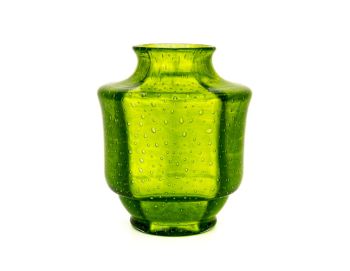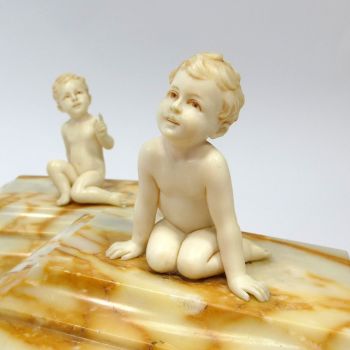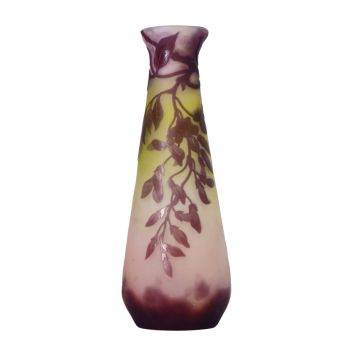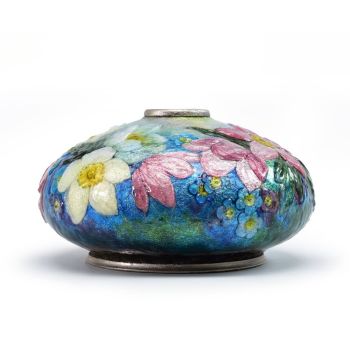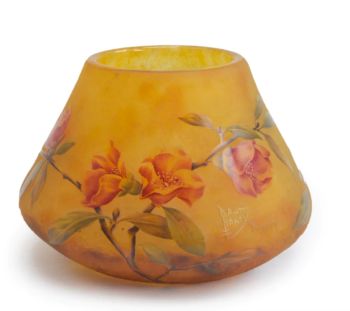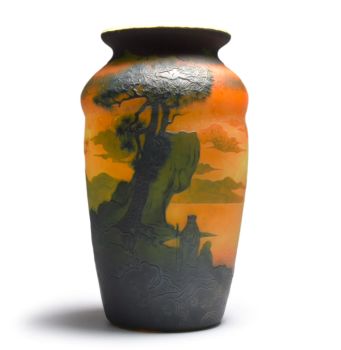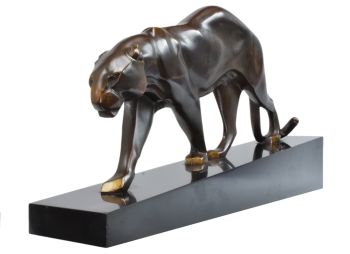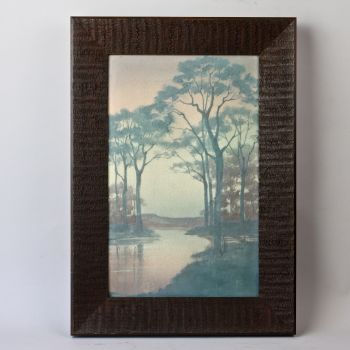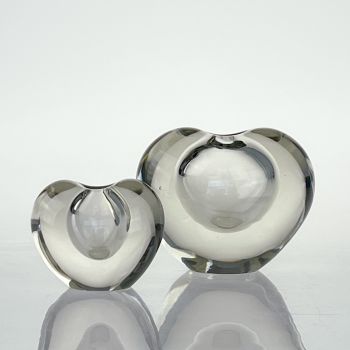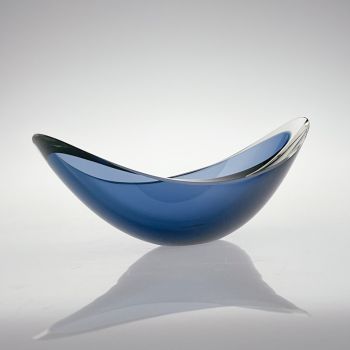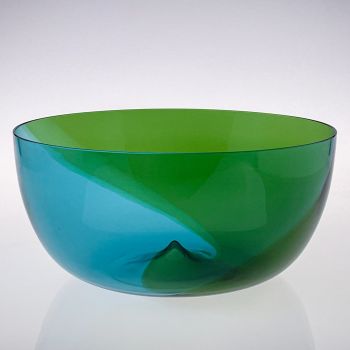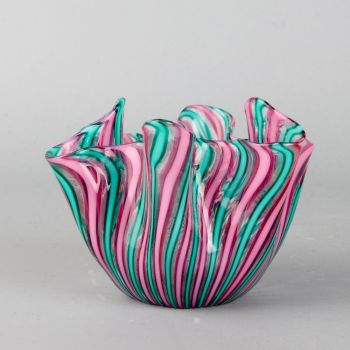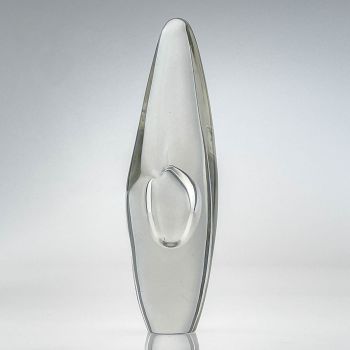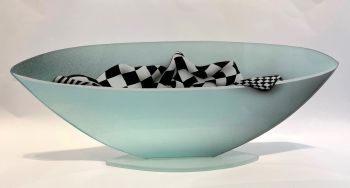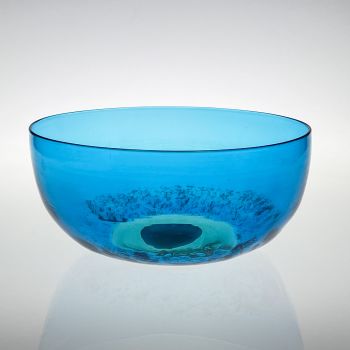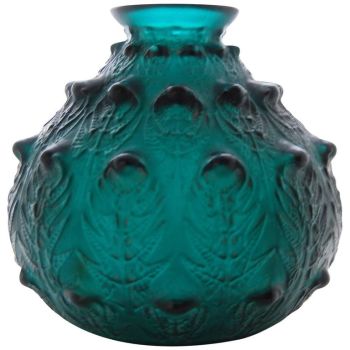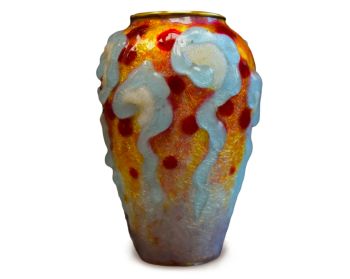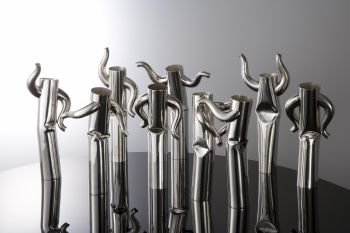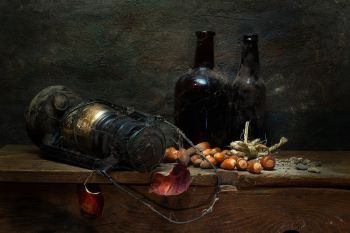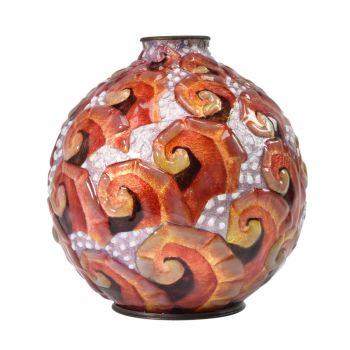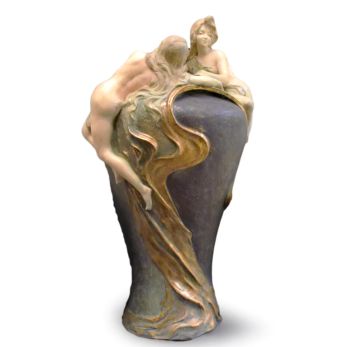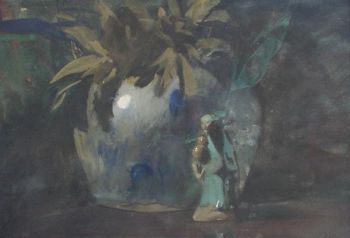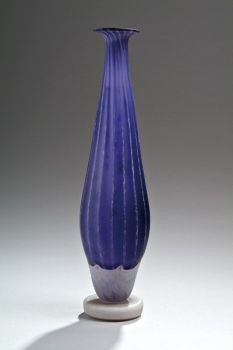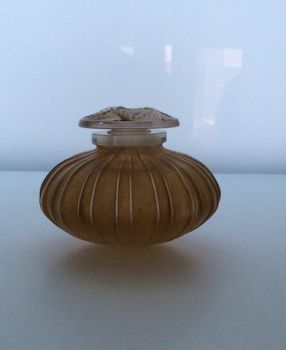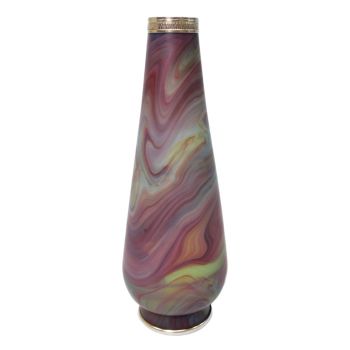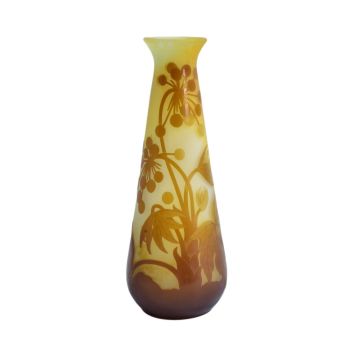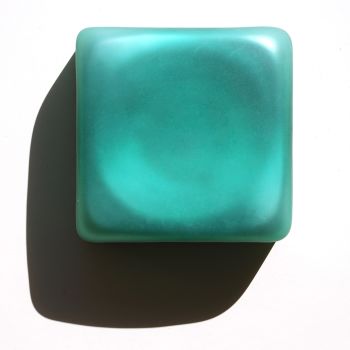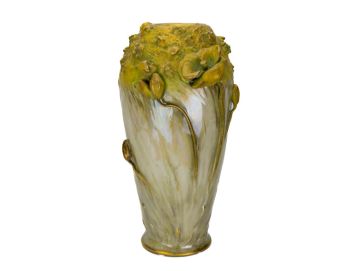Johann Loetz Witwe - Phänomen Genre 7773 – Orange 1900 - 1910
Johann Loetz (Lötz) Witwe Klostermühle
Glass
ConditionMint
Price on request
Antiques Emporium
- About the artworkJohann Loetz Witwe Phänomen Genre 7773 vase in the basic color orange with a silver-coloured iridescence applied in two broad bands over the entire surface of the glass. This vase is production number Series II 172, produced in the year 1900. The end of the vase is decorated with silver in a "dripping" design. This identical vase is included in the collection of the Passauer Glass Museum, Germany, inventory number 57 304.
This design is documented as: Production Number Series II 172
Literature: Passauer Glass Museum – Das Böhmisch Glas 1700 – 1950 Band IV – Jugendstil in Böhmen – Page. 28. - About the artist
Lötz/Loetz was founded by Johann Lötz in 1840 and was a company based in Bohemia, in the Czech Republic, at the time Lötz belonged to the Empire of Austria-Hungary. In 1879, a grandson of Lötz, Max Ritter-Von Spaun, took over the business from his grandmother and kept the name Joh. Lötz Witwe.
From that moment on, Johann Lötz Witwe really started to make a name for itself, they developed new innovative glass techniques, but their design and bright colors were also completely innovative. They designed special shapes and vases, luxury items, which they sold in luxury shops in Vienna, Berlin, Hamburg, Paris, London, Milan, Brussels and Madrid. It soon made them very well known and famous.
It was the period that Art Nouveau or as it was called in Germany Jugendstil flourished. They used organic shapes, nature was their example, also for Lötz, they developed beautiful decors, resembling butterfly wings, such as the papillon decor of this vase, often the shapes were formed organically by using tongs to shape the hot glass unevenly , as also flowers are formed. But also an octopus or sea shells were taken as examples for their special vases and decors.
Lötz participated in all kinds of World Exhibitions, including the famous World Exhibition of 1900 in Paris where they won the Grand Prize. They were awarded numerous prizes for participation in World Exhibitions. Max Ritter von Spaun also received special awards for his contribution to the glass industry, in 1883 he was allowed to use the Imperial eagle in their shield and seal, they were also allowed to use K.K. Put Private Glass Factory in front of their name. In 1889 he also received a knighthood from Franz Josef. But other royal houses were also involved. He received the Belgian Order of Leopold and the honorable French Legion d'Honneur.
Their designs were popular, also in the United States. Tiffany worked with Lötz on the Favril set. Lötz patented some of their special techniques, such as the one they used to make the Phänomen decor. They were able to make iridescent glass. In short, Lötz had become a household name. And it still is.
Lötz also worked closely with other glass manufacturers such as J.&L. Lobmeyer and E. Bakolowits Söhne in Vienna and with Argentor. In addition, Lötz worked closely with various artists, such as Josef Hoffmann, Koloman Moser, Franz Hofstötter, Michael Powolny and other artists from the Wiener Werkstätte. Michael Powolny was responsible for the much tighter tango vases of the 1920s.
The First World War and the end of the Austrian Empire meant a difficult period for Lötz.
Lötz existed until 1940, after a bombing raid the factory was completely burnt down. After WWII, the Czech Republic belonged to the satellite states of the Soviet Union, the factory was nationalized until it was finally closed in 1947.Lötz glass is still very popular and is collected worldwide, in addition, their oeuvre can also be found in many museum collections.
Are you interested in buying this artwork?
Artwork details
Related artworks
Johann Loetz (Lötz) Witwe Klostermühle
Johann Loetz Witwe – Jugendstil Cobalt Papillon vaas1900 - 1910
Price on requestAntiques Emporium
1 - 4 / 7- 1 - 4 / 24
Gabriel Argy-Rousseau
Gabriël Argy-Rousseau – Crabes et Algues vase – 19201920 - 1929
Price on requestAntiques Emporium
1 - 4 / 24René Lalique
A very rare deep green ‘Fougeres’ Vase designed by R. Lalique1912
€ 8.950Lennart Booij Fine Art and Rare Items
 Curated by
Curated bySilla Scheepens
Jan Voerman sr
Still Life with flowers in a Chinese figurine1850 - 1900
Price on requestKunsthandel Pygmalion
Herman Bogman jr.
Flower still life of a nasturtium in a blue vase1950 - 1965
Price on requestAdelwein Kunst
1 - 4 / 24Unknown artist
An Indian part-gilt silver-clad ceremonial sceptre or mace with a tiger’s head1850 - 1900
Price on requestZebregs & Röell - Fine Art - Antiques
 Curated by
Curated byDanny Bree
Amalric Walter
Amalric Walter & Henri Bergé – Crabe plumier1920 - 1929
Price on requestAntiques Emporium
1 - 4 / 24Gabriel Argy-Rousseau
Gabriël Argy-Rousseau – Crabes et Algues vase – 19201920 - 1929
Price on requestAntiques Emporium
Frères Daum
Daum Nancy – “Paysage Soleil Couchant” vase with two applied handles1900 - 1910
Price on requestAntiques Emporium
Amalric Walter
Amalric Walter & Henri Bergé – Crabe plumier1920 - 1929
Price on requestAntiques Emporium
1 - 4 / 12







